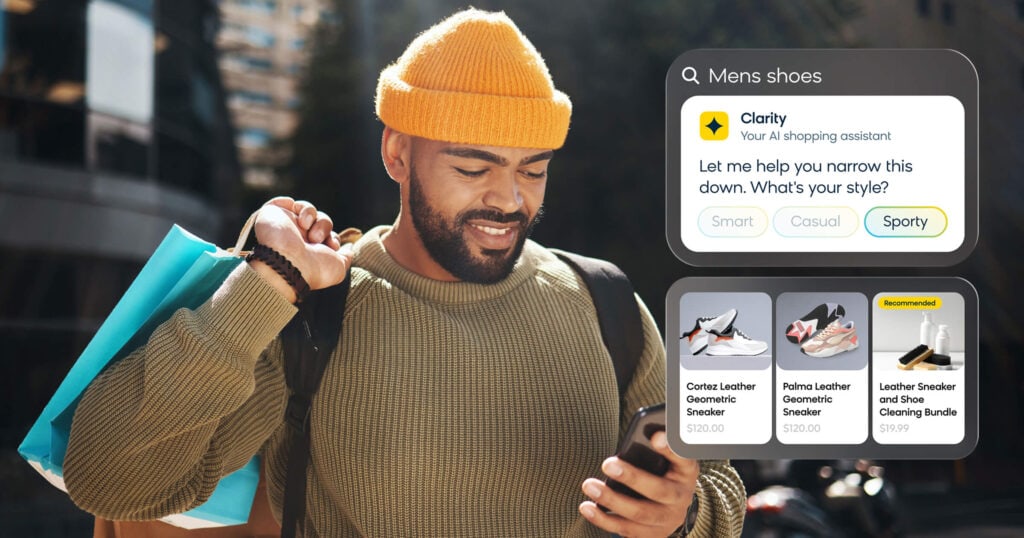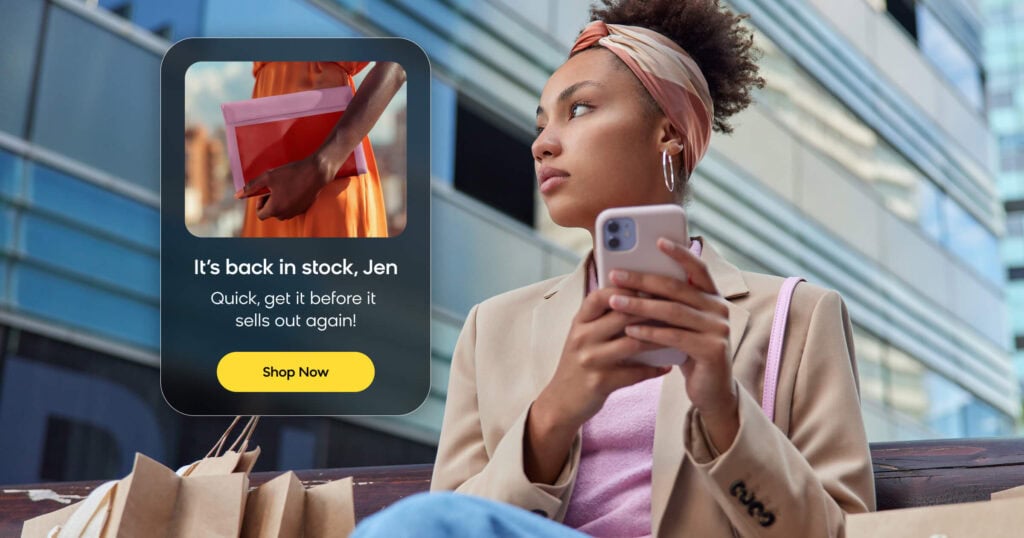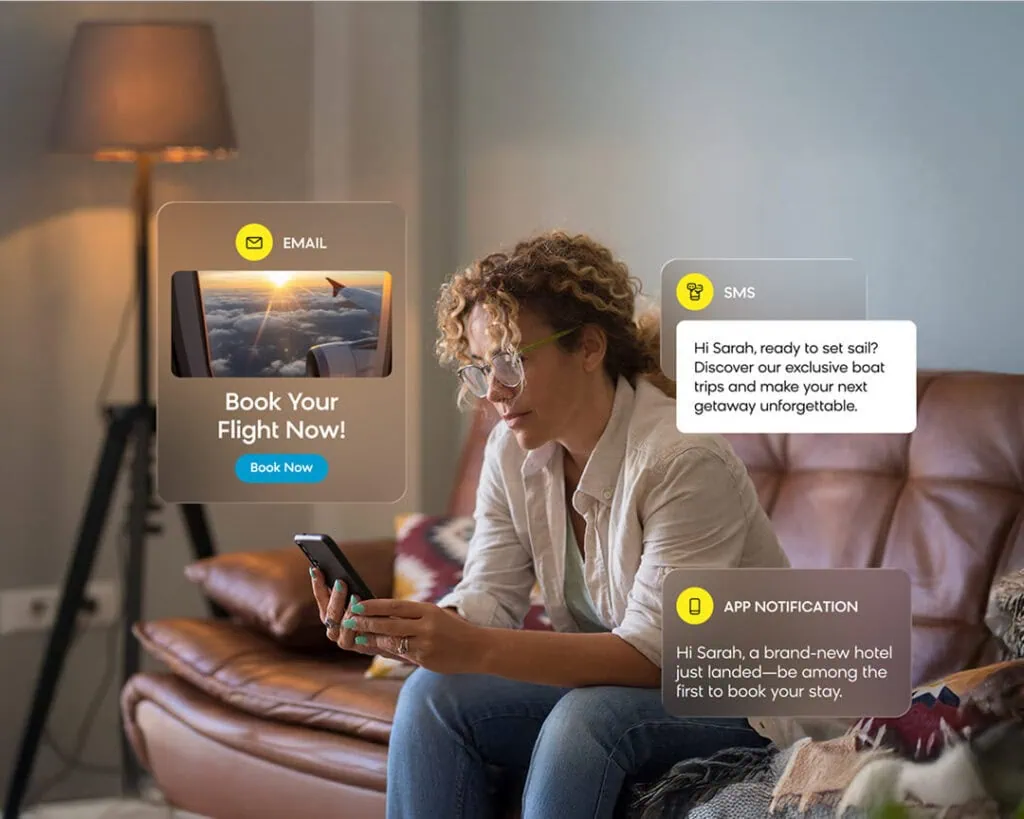Adopting the right ecommerce personalization strategies are essential for digital commerce companies in today’s crowded and competitive online marketplace.
Ecommerce personalization strategies help to provide customers with a tailored and relevant shopping experience online. This directly leads to increases in engagement, loyalty, and sales.
Bloomreach defines ecommerce personalization as the practice of using commerce data responsibly to get to know, guide, and impress your customers with experiences that are so relevant and contextual, they feel like magic. Bloomreach works with partners across the world to deliver use cases to customers that help them to build optimally personalized experiences for their end customers online.
One of those partners is KPS, one of the most innovative companies in Europe that is focused on working with ecommerce companies to deliver successful digital transformations. With a great deal of commitment, compassion, and reliability, KPS leads companies in conquering digital uncertainty and helps them utilize the diverse opportunities of digitalization.
KPS works with brands to help them offer connected customer experiences to their customers that ultimately help lead to increased brand loyalty. Paired with marketing technology like Bloomreach offers, personalization use cases can:
- Improve the end customer experience: Personalization allows ecommerce companies to provide tailored recommendations, offers, and content based on a customer’s previous purchases, search history, and preferences. This personalized experience helps to improve customer satisfaction and loyalty by making them feel valued and understood.
- Increase sales and revenue: Personalization can drive higher conversion rates, larger order values, and increased repeat purchases. By providing relevant product recommendations and offers, ecommerce companies can motivate customers to make more purchases, leading to increased sales and revenue.
- Help companies access better insights: Personalization enables ecommerce companies to gain valuable insights into customer behavior, preferences, and needs. These insights can be used to optimize product offerings, pricing, and marketing strategies, leading to improved business performance.
Keep reading for three specific strategies that you can implement into your tech stack right away to see better results with ecommerce personalization.
Hyper-Personalize Content at Scale
Hyper-personalization is an advanced form of personalization that leverages advanced data analytics, artificial intelligence, and machine learning to deliver highly customized experiences to individual customers. Hyper-personalization goes beyond the basics of personalization, where recommendations and content are based on a customer’s past interactions or purchase history, and instead, leverages real-time data to predict and anticipate individual needs and preferences.
Hyper-personalization uses a combination of data sources such as browsing behavior, purchase history, social media activity, and even real-time location data to create highly tailored experiences for each customer. It involves using predictive analytics to anticipate what a customer is looking for before they even search for it, and then delivering personalized recommendations, offers, and content in real-time across multiple channels.
Hyper-personalization helps businesses to build stronger customer relationships and drive engagement by providing experiences that are extremely relevant to each customer’s unique needs and preferences. It can improve customer satisfaction, increase loyalty, and drive revenue growth through higher conversion rates and average order values.
Yves Rocher upgraded its hyper-personalization efforts by using Bloomreach Engagement’s real-time product recommendations feature. The company can now personalize product recommendations on-site for anonymous guests (as long as they have accepted cookie tracking).
As soon as an anonymous visitor views a product, an anonymous user profile is automatically created for that visitor within Bloomreach Engagement to capture first-party data. The data collected within this profile is used to immediately personalize the customer’s in-session experience. As the user goes from product to product and back to the home page, the personalized experience with the brand becomes better.
Even better, this history is never lost. When an anonymous user eventually registers using an email address, all of the information and personalization preferences are captured and saved as an identified customer so that future campaigns like emails, SMS, or even web and in-app messages are personalized accordingly.
Yves Rocher increased its purchase rate on recommended products by 11x compared to a top-seller recommendation with Bloomreach’s real-time product recommendations.
Go Above and Beyond With Holistic Personalization
Many brands stop with just hyper-personalization. But customers are asking for more — they’re asking for a complete customer experience with your brand. Which means your brand needs to focus on holistic personalization.
Holistic personalization is an approach to personalization that considers the entire customer journey across all touchpoints and channels to create seamless, cohesive, and highly relevant experiences. Unlike traditional personalization, which often focuses on specific interactions or channels, holistic personalization takes a broader view, encompassing every aspect of the customer experience.
Holistic personalization involves leveraging data from multiple sources, including behavior, transactional, and contextual data, to build a deep understanding of each customer’s needs, preferences, and behaviors. This data is then used to personalize interactions across all channels, such as email, mobile, social media, in-store, and online, to create a consistent and engaging experience that meets each customer’s unique needs.
The goal of holistic personalization is to create a seamless, unified, and highly personalized experience for customers across all touchpoints, leading to greater engagement, loyalty, and revenue growth for the brand.
To break it down even further, no customer should have the same experience with your brand that another customer has. This is because no one has the same customer preferences across the board and that should be reflected in the personalized experience.
Holistic personalization ensures that it is reflected and that customers aren’t seeing content or recommendations that are meant for someone else.
Personalize the Entire Experience Rather Than Just the Products and the Content
Personalizing the entire customer experience means going beyond a personalized product recommendation or a personalized on-site weblayer. It means considering all aspects of the customer journey on your website. And it is crucial for building strong, long-lasting relationships with customers.
Personalizing all aspects of the customer experience online gives customers a feeling that your brand understands them and their preferences. This feeling of being understood greatly enhances customer satisfaction and increases the likelihood that they will re-engage with your brand.
This also can provide your company with a competitive advantage. Companies that invest in personalization enjoy a higher level of customer loyalty and are more likely to retain customers in the long run.
Here are three options for thinking beyond just product and content with ecommerce personalization:
- Site Layout: The site layout can be personalized based on a customer’s preference and behavior, making it easier for them to find what they are looking for.
- Payment/delivery options online: If you know that a customer uses PayPal to check out, why would you show them options to pay with their credit card? Or if you know that a customer needed rush delivery for their items last time, why not offer that to them again? Can you autofill forms for them on their second visit back with your brand? Use your customer data to your advantage to streamline the online checkout process.
- Use AI to personalize interactions: A new wave of conversational commerce and generative AI have helped brands personalize conversations with customers online through AI chatbots.
Bloomreach and KPS Can Help Your Brand Personalize Customer Experiences
Together, Bloomreach and KPS are helping brands across Europe and in the United Kingdom personalize experiences for their customers and grow revenue.
By removing barriers for end customers and helping companies to adopt an omnichannel approach to using Bloomreach Engagement, KPS considers how all online and offline channels can be excellently integrated from the start.
Learn more about our partnership and how it can benefit your ecommerce business today.













